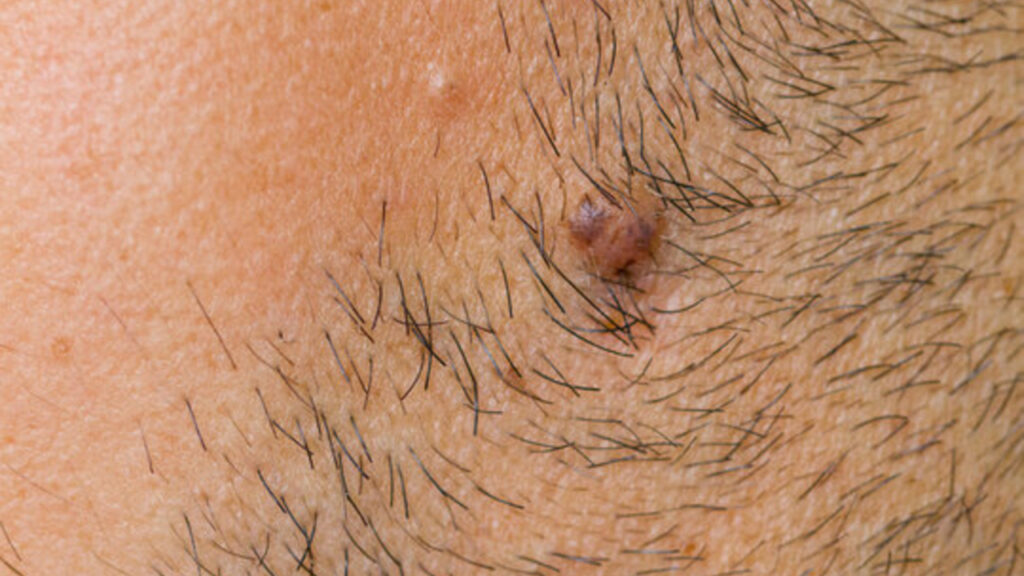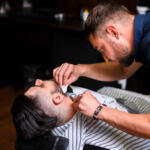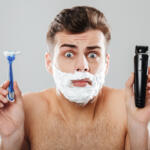
Have you ever encountered a black scab over an ingrown hair and found yourself wondering why it turned black? As someone who has been studying dermatology for years and handling a myriad of skin conditions, I can help you unravel the mystery behind this peculiar phenomenon. Read on as we delve into the fascinating world of skin healing processes, and specifically, why an ingrown hair scab may turn black.
Ingrown Hair: A Quick Overview
Ingrown hair is a common condition that occurs when the sharp tip of the hair curls back or grows sideways into the skin. It often results in a red, irritated bump that sometimes can become infected and fill with pus, thereby forming a pustule. This condition can occur anywhere on the skin, but it’s most common in areas where you shave, wax, or use other methods to remove hair.
The Healing Process: Formation of a Scab
When an ingrown hair becomes inflamed, it can lead to the formation of a scab. A scab is essentially a natural bandage made by our body. When the skin is broken, a clot forms to stop the bleeding. Then, fibrin, a protein that binds together platelets, creates a meshwork for the scab.
As the skin under the scab heals, the scab itself will dry and eventually fall off. This is an essential part of the healing process, and interrupting it, like picking at the scab, can lead to scarring.
So, Why Does an Ingrown Hair Scab Turn Black?
Now, onto the question that brought you here: why does an ingrown hair scab turn black? The color change in the scab is usually a result of the concentration of red blood cells and dried blood components, including iron, which turns dark red or black when oxidized.
Moreover, melanin, the pigment responsible for skin color, can play a role. Increased melanin production at the inflammation site can lead to post-inflammatory hyperpigmentation, causing the scab to appear darker or even black.
Remember, the color of the scab has no direct correlation with the severity of the infection or the healing process. The black color is purely cosmetic and doesn’t mean anything is wrong.
When to Seek Medical Advice
While most ingrown hairs and the associated black scabs are harmless, you should consult a dermatologist if you notice:
- An ingrown hair or scab that’s significantly painful or swollen
- Signs of infection, like spreading redness or red streaks
- You’re frequently getting ingrown hairs
Your healthcare provider may prescribe medicine or other treatments to help. For example, if you’re prone to developing ingrown hairs, they might suggest hair removal treatments like laser hair removal or electrolysis.
Preventing Ingrown Hairs and Black Scabs
Prevention is always better than cure. To reduce the risk of ingrown hairs and subsequent black scabs:
- Always soften the skin with warm water before shaving
- Use a sharp blade and rinse it between strokes
- Shave in the direction the hair is growing
- Don’t pull the skin taut while shaving
- Apply a moisturizer after shaving
It’s also a good idea to exfoliate the skin regularly to remove dead skin cells that can clog hair follicles and cause hair to grow back into the skin.
In Conclusion
The mysterious black scab over an ingrown hair is not so mysterious after all. It’s merely a sign of the healing process, as red blood cells and iron oxidize and darken. While it may look concerning, remember that it’s usually a normal part of the skin’s healing process.
However, if the scab or ingrown hair causes significant discomfort or shows signs of infection, it’s crucial to seek medical advice. By understanding your skin’s reaction and taking preventive measures, you can better manage and prevent the occurrence of ingrown hairs and the black scabs that can follow. As always, it’s essential to treat your skin with care to maintain its health and integrity.
Healthy Skin is Happy Skin
Remember, a little attention and care toward your skin can go a long way. As someone with a deep understanding of dermatology, I cannot stress enough the importance of adopting healthy skin habits. Being aware of changes in your skin is the first step to ensuring its health. As we have seen, even something as simple as a black scab over ingrown hair can tell a story about your skin’s health and healing process.
In the grand scheme of things, knowledge is power. When you understand why something happens, you can take the appropriate steps to address it or prevent it in the future. With this newfound understanding of ingrown hairs and black scabs, you’re one step closer to maintaining healthier, happier skin.
So, the next time you spot a black scab on an ingrown hair, don’t panic! Remember what you’ve learned here, take appropriate steps, and know when to seek professional help. Here’s to better skin health for all of us!
Last update on 2024-04-24 / Affiliate links / Images from Amazon Product Advertising API
Affiliate Disclosure: This post contains affiliate links, which means I may receive a small commission, at no extra cost to you, if you make a purchase using these links.

Jay Kang
Just because i'm asian does not mean I don't need shaving. I always wanted to grow a beard when I was young, now I need to shave because hair growth for me is a problem. I'm going through what every man will and has gone through before.





